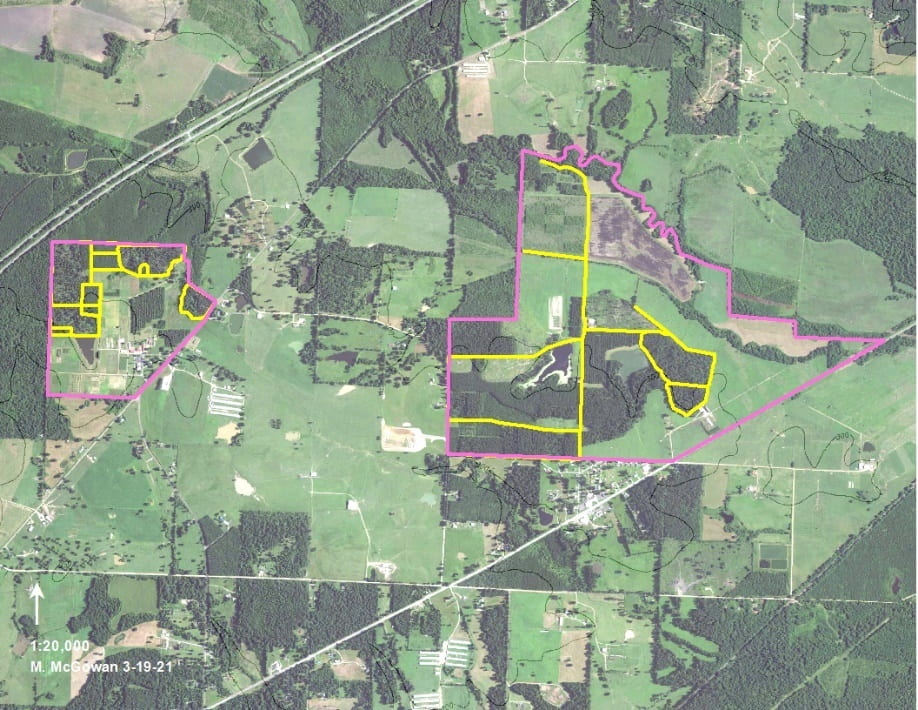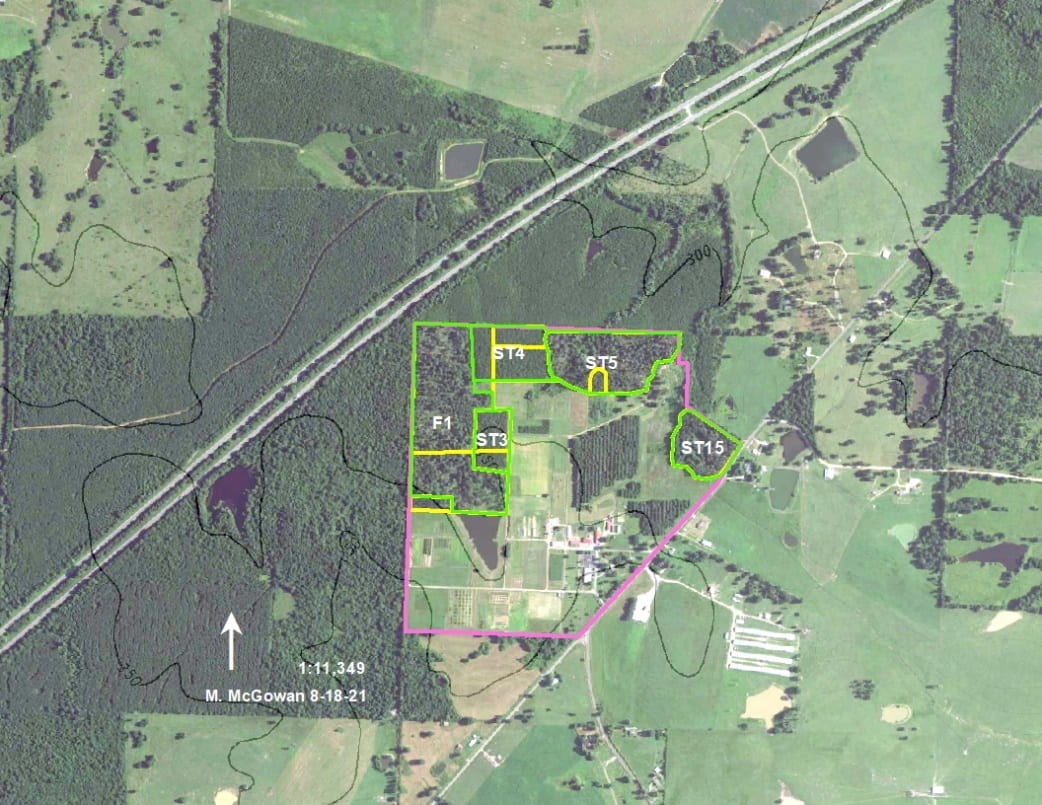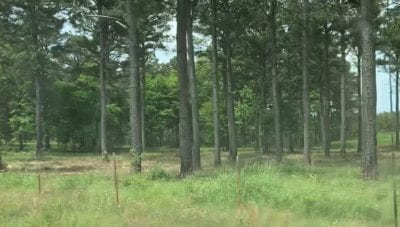In 1923, the Arkansas General Assembly authorized the creation of the Fruit and Truck Branch Experiment Station devoted to the “investigational work relative to the problems of fruit and truck farmers, including fruit and truck production, varieties, soils and soil management, crop rotation, other crops for the fruit and truck farmers, livestock and poultry for the fruit and truck region, and any other crops adapted to such system of farming together with the economic problems of the farmers of that section.”
State funding was provided in 1925, and 185 acres of self-described poor, unimproved, depleted, unprofitable hill farmland typical of the region was acquired by the Arkansas Agricultural Experiment Station in December 1926. Located on the U.S. Highway 67 (Bankhead Highway) just three miles northeast of Hope, the land acquisition was made possible through donations of 37 businesses and 49 individuals of Hope. Now called the Southwest Research and Extension Center, or SWREC, work began in 1929.
Source: https://aaes.uada.edu/research-locations/southwest-research-extension-center/
Goals
The primary objectives for the forest resources at SWREC Include:
- Management of loblolly pine (Pinus taeda) plantations for timber production
- Loblolly pine provides a fast-growing tree with excellent timber value. Management is focused on demonstrating methods to improve growth and yield.
- Management of natural and planted hardwood stands for multiple objective management
- Multiple objective management is often desired in hardwood stands and management plans are designed accordingly.
- Management of mixed pine/hardwood forests
- Mixed pine and hardwood forest stands provide an opportunity for forest landowners who wish to employ lower intensity management.
- Management to improve habitat for upland wildlife species
- Management to improve wildlife habitat in upland areas includes thinning, prescribed fire, and maintaining openings or gaps in woodlands
SWREC is divided into two tracts (Fig. 1), the Station Tract (West) and the Spencer Tract (East). Like most of south Arkansas, the soil here supports pine (Pinus spp.) growth very well, so most of the SWREC forest consists of pine plantations. North of the Spencer Tract, bordering the creek which forms the boundary, are a few stands of bottomland hardwood, along with bottomland hardwood mixed with residual pines from a thinning that took place 25 years ago around the Hawg Pond.

Fig. 1. An aerial view of the Southwest Research and Extension Center forestlands.
SWREC has several forests of different ages. For example, St 15 has mature pines, likely planted in the late 1960s or early 1970s, which are ready for harvest followed by replanting (Fig. 2). St F1 is a Q-Factor Thinning Demonstration in pines and contains trees in every size class up to about 25-26 inches DBH.

Fig. 2. The Station Tract management blocks.
The Spencer Tract (Fig. 3.) is more diverse in terms of species composition, with pine plantations and mixed hardwood bottomlands. Some small tracts are scheduled to be converted into pasture once they’re harvested in order to help support AES’ commitment to animal science research at SWREC.

Fig. 3. The Spencer Tract management blocks.
Past Management
A number of loblolly pine (Pinus taeda) research projects over the decades have resulted in heterogenous, scattered pine plantations of various ages. The Q-factor thinning, as practiced in St F1, generates an uneven-age tree distribution, which is a unique type of forest management to southern pine forests.
Another example is the stand scheduled for harvest in late 2021/early 2022, referred to as the Sudden Sawlog project, where differing tree densities were set as the variable in loblolly pine sawlog production. Some of the younger pine plantations have been thinned recently, such as SPA1 and SPA2, where every third row was harvested in 2014.
Cherrybark oak (Quercus pagoda) was harvested in Spencer Tract stands B1 and B5 around 2007. Research faculty from the AFRC planted bottomland hardwoods in the northern center portion of the Spencer Tract as well. Because their harvest potential is still 30-40 years away, tentative plans to incorporate these very young trees into an agroforestry project are under discussion.
Current Management
At SWREC, there is one active timber sale contract on the Sudden Sawlog tract. In the summer of 2021, a prescribed burn to clear the forest floor and encourage pine seed germination was completed. The initial plan included a seed tree harvest effectively eliminating the need to replant. While the fire removed a lot of material from the stand, it was determined during the marking phase that there was still too much competition on the forest floor. Thus, the stand was further prepped by mulching the undergrowth using skid steers with a mulcher attachment.

Fig. 4. The Sudden Sawlog Tract received a prescribed burn in 2021.
SWREC’s need for more pasture requires a revised plan that includes the current attempt to establish an agroforestry project using a stand of native grasses that had previously been planted in several blocks. Additionally, the revised plan includes the establishment of grass stands under the seed trees in the remaining blocks, which will eventually be used to graze cattle. When timber is harvested, the land will be cleared and burned again, followed by prescribed practices from forage scientists.

Fig. 5. A revised plan for the SWREC calls for the establishment of grass stands under seed trees.
Additional harvests are scheduled at SWREC, in ST15 and ST5, with plans to replant those tracts back into loblolly pine following the harvest and clean up. This tract is close to Interstate 30 and using fire to prepare a seedbed for germination requires the right conditions. Site preparation plus replanting seedlings has been determined as the appropriate regeneration method for these two stands.
Future Management
Much of the short-to-medium term management will be guided by the SWREC’s animal science research requirements. More pasture is needed to support future cattle management research projects. STA10 and STA8 stands are under consideration for conversion to pasture. In addition, the potential agroforestry project in the northern tip of the Spencer Tract, the “B” stands, is under consideration. The management plan includes a harvest of SPA19, the Hawg Pond tract, following the completion of the Sudden Sawlog project.
The forests around the headquarters are not forecast to be used for cattle and pasture management, and there will continue to be pine management. Tentatively, ST3 and ST4 will be thinned there in 2024, as well as F1. After that, it will be several years before the remaining pines will be large enough to receive initial thinning operations.
